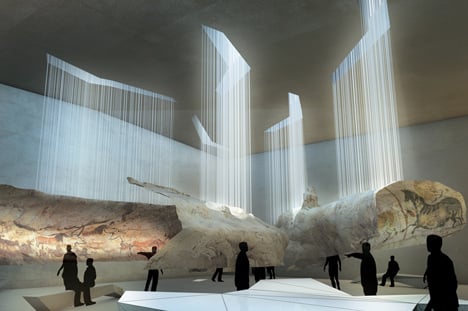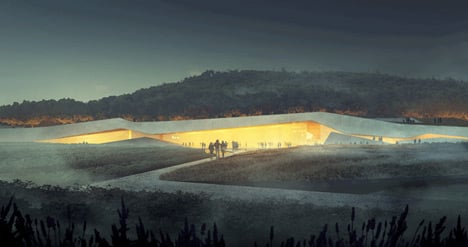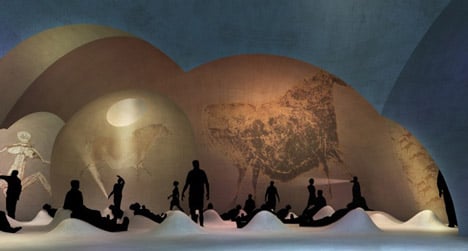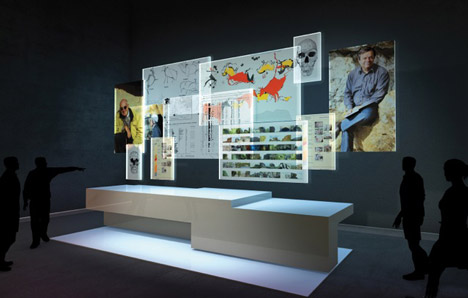Lascaux IV: Cave Painting Centre by Snøhetta, Duncan Lewis and Casson Mann
Here are some images of the competition-winning proposals by Snøhetta, Duncan Lewis and Casson Mann for a visitor complex at the Paleolithic cave paintings in Lascaux, France.

A subterranean complex of tunnels and chambers will surround replicas of the historic paintings, estimated to be 17,300 years old, creating a low-rise building that folds up from the landscape.

The Lascaux cave paintings were first discovered in 1940, but have been closed to the public since 1963 after the carbon dioxide produced by visitors caused the images to visibly deteriorate.

Architects Snøhetta and Duncan Lewis will work alongside exhibition designers Casson Mann to recreate the experience of the cave and paintings, which mostly depict historic animals.

Sliced openings in the roof will allow shafts of sunlight to filter gently into the cave interiors. Casson Mann designed these spaces first and the architects planned the rest of the building around them.

The Lascaux IV cave painting centre is set to open in 2015 and is expected to attract up to 400,000 visitors a year.

Norwegian studio Snøhetta is also currently working on a waterside opera house in South Korea and a Maggie's Centre for cancer care in Scotland. See more architecture by Snøhetta on Dezeen.
Here's a short description from Casson Mann:
A team comprising exhibition designers Casson Mann, Snøhetta and Duncan Lewis have won the prestigious Lascaux IV: International Cave Painting Center competition.
The team won against several of Europe's leading architects including Mateo Arquitectura, Auer+Weber and Jean Nouvel.
With a budget of €50million, Lascaux IV has been initiated to conserve the integrity of the original cave complex, permanently closed to the public since 1963, while ensuring that the public can still appreciate the remarkable Paleolithic paintings within. It is part of a strategy to establish this world heritage site and the Dordogne region of France as an internationally culturally and scientifically significant attraction in terms of access to, understanding and conservation of parietal art.
Speaking about Casson Mann's winning design, Jury member Bernard Cazeau, Président du Conseil Général de la Dordogne, said: "From the point of view of the scenography – which was, in our eyes an essential factor – it's the most successful project."
The winning concept expects to welcome 400,000 visitors per year and includes a low profile exterior that reflects the contours of the limestone topography and a dramatic interior designed to transport the visitor into a cave complex complete with tunnels, cavernous spaces and chambers lit by shafts of broken sunlight.
Project Team:
Architecture: Snøhetta + Duncan Lewis Scape Architecture
Scenography: Casson Mann
Multi-media: Jangled Nerves
Cost Consultant: VPEAS
Structural Engineering: Kephren
Environmental Engineering: Alto Ingénierie
Lighting: 8'18'' Conception lumière
Sound: Daniel Commins
Location: Montignac, FRANCE
CLient: Conseil Général de la Dordogne
Surface Area:
Total floor area: 8605 sqm
Facsimile: 1600 sqm
Site: 65,770 sqm